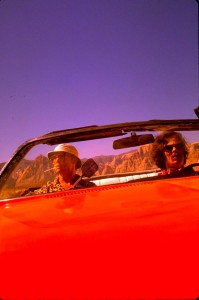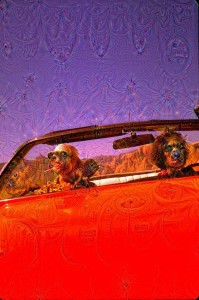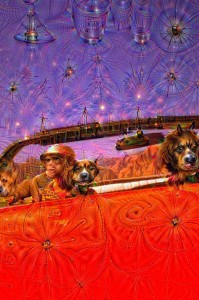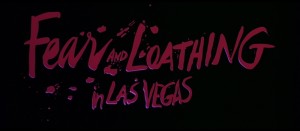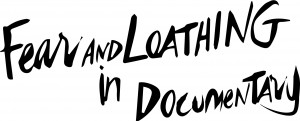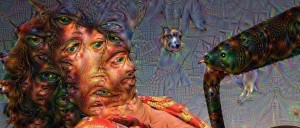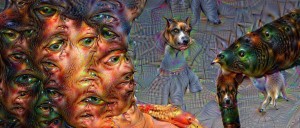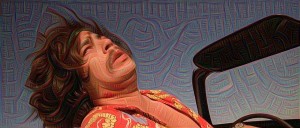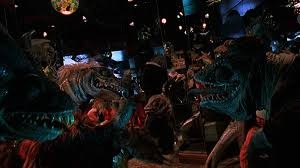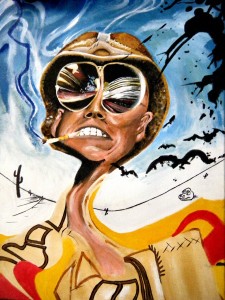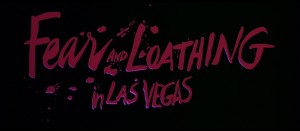I have structured my final post within a loose chronological order
Beginning the semester / Blog posts
It occurred to me quite early in the semester that this class was going to be exploring more than just the basic production processes of cinema. Although we ran through these elements such as shot size, framing, camera movement etc. They acted as a bouncing board to push me to think on another level about how these elements combined with one another and what effect they created. I began reflecting and rationalising my practical decisions giving myself a greater understanding of concepts like spatiality and pacing.
Through the group exercises I also started to apply a similar line of critical thought to my own methodology. I came to understand the value in being able to adapt your style of communication to suit your role as I reflected specifically on the effect of roles and the challenges of directing.
A little further on in the semester I began to understand that these concepts of spatiality and pacing should be motivated by a set of underlying guidelines or frameworks that would be formed by either emotional, theoretical or thematic values of the scene.
Scene analyses
I conducted a few scene deconstructions, namely the barber shop scene in Gran Torino and the diner scene from Taxi Driver. When doing these I attempted to break down the camera setups and movements of each scene by mapping them out and analysing them. I did not however properly connect these choices to the theory or motivation in my analysis of the barber shop scene in week 2. I was perhaps a bit more rigours in my analysis of the Taxi Driver scene as I attempted to draw these connections of the shot choices with the motives of the characters as well as the overall style of the film.
Research task
The point which I see marked the start of applying the theoretical frameworks into my work and writing was completing the research question on montage and decoupage. I must stress that I believe this task was crucial to building and broadening my understanding of the class. I found these readings were invaluable because given the nature of the class it was a challenge to find academic sources which held significance with the practical aspects of the class. The readings on montage gave me a strong understanding of both Sergei Eisenstein and Andre Bazin’s theoretical framework of montage as well as supplying their historical context and underlying philosophical approach to the term. The reading on decoupage assisted me to understand and grasp the concept of decoupage through the historical context of the term and thus gain a better understanding on the subject matter of the course. I later also came to reflect upon both terms coming to the realisation that they historically they have, at points shared a similar conceptual definitions meaning they were both vital terms in relation to understanding the class.
My Method posts
The idea for my final project originated out of a film Robin had shown me for during TV-2 called The Five Obstructions by Lars Von Trier. I saw the impressive results that Jorgen Leth had producer and so I wanted to replicate the process by replacing myself in the for Leth in nan effort to see what results I would produce. In working towards this goal I produced 7 ‘My method of working’ posts which you can find here:
1 – 2 – 3 – 4 – 5 – 6 – 7
At the start of these posts I attempted to formulate my project by first giving short analyses of each of the 5 obstructions in the film by examining how the various constraints had effected Leth’s reinterpretation. I tried to investigate the definition and function of a constraint to understand if or how it differs from a free decision and if they could or should share the same aims to reinforce the underlying motivations of a scene.
Nearing the end of the working method posts I started balancing the pros and cons of which scene I should choose to use in my final project if it should be the short film The Perfect Human that Leth used in The Five Obstructions or if it should be a different scene, and if so what qualities it should have.
Project pitch
It was around this time that I had developed the pitch of my final project, whilst I had not decided on what scene to use I had defined other aspects of my project by setting the parameters for my work.
I have decided to include my 30 word description of my project here as it serves to outline the core goals of the project which have remained the same despite the adjustments.
“Investigating my own sense of coverage by applying multiple sets of constraints to a single scene in an effort to push myself to rethink the scene with a fresh or experimental approach.”
Week 7 exercise
At a similar time I had completed my week 7 exercise to re-shoot one of the scripts that we had used previously in class. My basic premise was to have the tone of the scene to build tension to a climatic end point. In my planning and reflection I demonstrated how I planned to integrate and execute these motives using elements of mis-en-scene. Given the short time frame to complete the task I was quite satisfied with the end result with the exception of a mic issue which distorted most of the dialogue.
Final Project
Continuing to work on finding a suitable scene I completed this task from an exercise that Robin set me which comprised of a scene description coupled with a constraint. Although I misinterpreted the description of the task I found planning and making the task helpful as it challenged me to search for a creative solution to the constraint.
Reflecting and discussing this task with Robin also helped re-navigate what kind of scene would be suitable for my final project. I had been flirting with the idea of using a non-narrative scene or a scene without a dramatic base, however we came to the conclusion that such a scene would be diverting too far from the focus of the class.
First Obstruction
I began work on the first component of the final project which I called ‘first obstruction’ which consisted of a brief scene description about a couple having an argument over the phone. The constraints for the first obstruction involved not being able to show the female character and not to show the male character driving.
I found the biggest challenge of this component was the planning because I knew that this script would also be used in the other components. Script writing was not my forte and so I briefly considered using a found scene with similar content. Once I pitched the idea to my actor however the cogs were in motion and together we workshopped a basic story by creating detailed character notes. We were able to sketch an outline of the conversation filled with a backstory of previous lead up events for the chracters. I then grouped the actors together and we set about working through the scene using impromptu lines, after a few takes I was able to draw out a working script. In hindsight although I never planned on using this method of planning I’m glad I did because it pushed me to experience a different approach constructing a scene thus achieving the goals of my final project in an unexpected way. I have now gained more confidence with this methodology and I know the challenges and benefits that it brings.
The shooting process of the first obstruction went quite smoothly I had added a few formal devices of proximity and lighting to reinforce the characters emotional tones. Unfortunately during editing I had to compromise these somewhat as I encountered timing issues which were due to the fact that the male actor did not have anyone feeding him the females lines on set meaning he had to gauge the timings by himself.
Second Obstruction
I name the next component of my project the ‘second obstruction’. The brief was to only show the female character and to create two alternate endings for the scene. The constraints I was tasked with were to use a feminine aesthetic/female perspective, only use closeups and to use a tripod where necessary. The constraint of using a feminine aesthetic/female perspective phased me at first in the planning stage as I felt unsure of how to approach it. I came to realise that I was over complicating it and that perhaps it was more about what not to present in the scene i.e. eroticising or objectifying the female, rather than a concept I had to inflict upon it.
Having learnt after shooting the first obstruction, I realised that timing the lines might be an issue and so I also made some accommodations to counteract those issues. Similar to the first obstruction I had devised some additional formal devices to play around with such as alternating between the camera looking at the character and using her point of view. I also planned a series of compositions which aimed to keep a sense of movement within the frame. When reflecting on the planning process I did realise that I had unintentionally mirrored the action from the previous obstruction, although this may have been a subconscious choice I felt that perhaps I should have challenged myself further by enforcing a different sequence of movement upon the scene.
The shooting and editing process went along smoothly I was satisfied with most of the lighting and framing of the shots, although I did pick up a few mic issues on some of the tracking shots I was able to mask them to a passable standard. Some of the formal devices I added specifically the alternation of perspectives I did not follow through with as I felt they would have required further cues in the action to properly implement. The second obstruction marked the end (so far) of the filming I did for the class.
Editing task
My next task was an editing exercise to create a shorter single sequence which combined the two previous obstructions into a single conversation. I was set to create two versions of this sequence, one which favoured the formal properties of each obstruction and another which favoured the dialogue of the conversation. Reflecting on this task I managed to shorten the sequence considerably but I felt that could not achieve the goal of 2:30 without sacrificing the logical progression or visual continuity of the scene. Despite creating both versions from scratch they turned out to be remarkably similar, I think this was because the method in which I had filmed each obstruction had not allowed for multiple avenues of continuity.
My most recent edit you can find here is slightly more polished and just a smidgen shorter than the previous edits. I attempted to colour grade the film in an effort to create more defined spaces for each character as well as balance the lighting in a few shots that had a poor balance between subject and their background.
My screener is here. As I said in my reflection I think In this case I over did the grading when trying to find the balance with the lamp shot resulting in a grainy reddishness.
Next Obstruction
The next obstruction which Robin has given to me is to film the whole sequence, the constraints are : Only three motion picture shots allowed. The rest: all stills. no sync dialogue; voice over only. The voice over can be a narrator and/or maybe fragments of their exchange.
I have yet to plan this obstruction but stay tuned for the next instalment.
Final reflection
In retrospect of my final project I think that mis-managed my progress or perhaps mis-judged the amount of work involved when I set my goals. Although I am satisfied with the amount of work I have put towards to project but I feel that I am just scratching the surface of what I initially set out to do. The work I have now, the sequence of combined conversations, is what I would regard as the original scene to use as a basis to test different set of constraints upon. Using this line of thought I would consider the real ‘first obstruction’ to be the next obstruction that I am about to create.
I think I extrapolated the brief of the project a bit too far, creating such a deep backstory for the characters was informative process but perhaps unnecessary. By taking up the challenge of creating an original script the scene I ended up adding more ‘story’ than the scene needed. The scene could have benefitted had I distilled it down to its basic premise – a couple have an argument over the phone. Distilling it might have also meant that I could have progressed further with the path of the project. Another key observation that I think I will consider in my future work is looking inwards rather than outwards so to speak. Quite often when given a constraint I would look to other sources to try and find references to assist my interpretation when in some cases the best thing to do would be to search for that within myself.
With all that said I think that the in process of working through these tasks to get to this point in the project still helped me to achieve the goals that I initially set for the project. Not only were my conceptions of coverage were challenged but my methodology was challenged. In hindsight I weighted the goals of my project too much on the conceptual side and I did not fully consider the benefits I could gain from practically working through this project in how it would change my methodology.
This class gave me the tools and assistance to gain a deeper understanding of coverage, an ability which I strive to develop further in my future work.
Misc posts
Here are a few posts which failed to work their way into one of the headings above but which I believe still deserve a mention.
I reflect on my concept of the term ‘pure cinema‘.
Thoughts on the legacies of television exhibition in relation to repetition and variation on repetition.
Acting performance reflection and reflection on acting emotions.
I will update video links soon as they are currently exporting.

